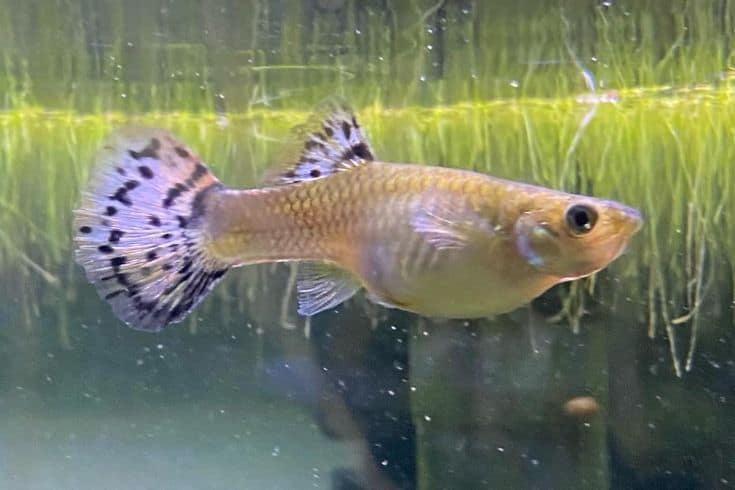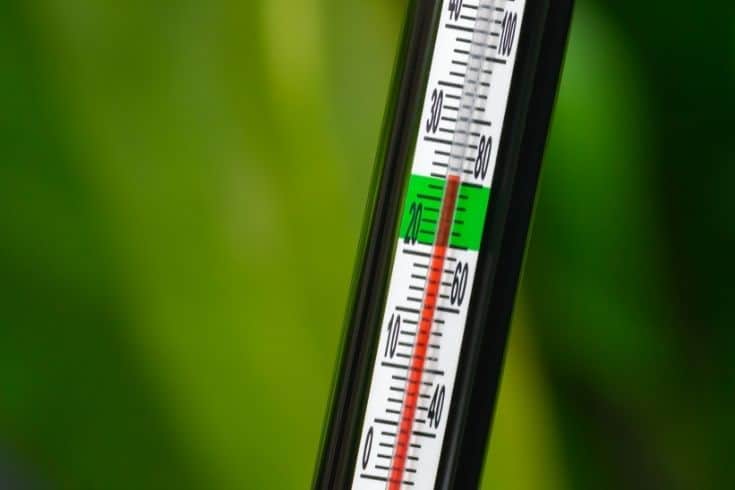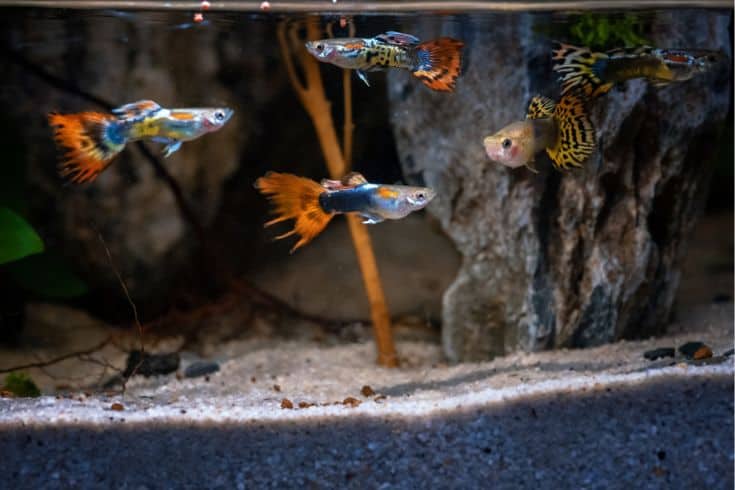Of the many types of fish one can think of in the aquarium hobby, guppies are perhaps one of the most popular. These fish hail from South America and are colorful, easy to care for, and fun to watch. Guppies are also relatively easy to breed, making them a great choice for beginner fishkeepers who want to try breeding fish.
This article takes an in-depth look at how guppies mate, how to set up a breeding tank, and how to care for fry (baby guppies). By the end of this article, you will have all the information you need on breeding guppies! Gone are the days where you had to purchase fry from a store – now, you can successfully breed your own at home.
How Do Guppies Mate?
Courtship is Initiated by the Male Guppies
Guppies are livebearing fish, meaning they give birth to live fry rather than laying eggs. In order for baby guppies to be born, the male and female guppy must first mate. Mating begins when the male guppy initiates courtship behavior towards the female. This usually involves the male guppy swimming around the female and flicking his tail in her direction.
These “dances” are meant to catch the female guppy’s attention and let her know that he is interested in mating. If the female guppy is receptive to the male’s advances, she will allow him to approach her and begin the mating process.
One thing to note is that male guppies can be very persistent throughout this elaborate mating ritual and may not take no for an answer! If a female guppy is not interested in the male, she may need to swim away or hide in order to avoid being harassed by him. We recommend keeping a ratio of 1 male to 3 female guppies to avoid unwanted aggression.
Fertilization Takes Place Internally
Once the male and female guppy have “found each other” and are ready to mate, the actual process of fertilization takes place. The male guppy will position himself behind the female and turn to his side. He will then insert one of his gonopodia (sex organs) into the female’s vent, which is located towards the base of her tail.
The gonopodium is a long, tube-like organ that is used for transferring packets of sperm from the male to the female. These packets of sperm are known as “spermatophores,” and they will travel through the gonopodium and to her ovaries, where her eggs will be fertilized. This process is known as internal fertilization, and it results in the female guppy becoming pregnant.
Female guppies can store these packets of sperm for months at a time, meaning they can become pregnant multiple times from a single mating. In fact, it’s not uncommon for female guppies to give birth to 2-3 batches of fry from a single mating!
The Female Fish Carries the Fry Until Birth
Once the female guppy is pregnant, her gravid spot will become increasingly prominent and dark. This dark spot actually marks the area where her eggs are developing and will eventually be released from. Though the gravid spot is usually visible regardless of whether or not the females are pregnant, a pregnant female’s gravid spot will be much darker in color.

As the fry develops, the female’s belly will begin to swell as she grows what is known as a “livebearer’s tummy.” This is perfectly normal and simply means that her fry is getting bigger and she is getting closer to giving birth.
After a gestation period of between 21 to 30 days, the female guppy will give birth! She will “drop” anywhere from 2 to 200 fries, with each fry emerging fully formed and ready to swim on their own. Though these guppy babies are independent for the most part, they still need to be kept in a dedicated tank for baby guppies until they mature to avoid turning into fish chow!
Ideal Breeding Conditions for Guppies
Great! You now have a little more insight into how guppies mate and give birth. But what does this mean for you as an aquarium owner? Well, if you’re interested in breeding your guppies, you’ll need to establish ideal breeding conditions for your fish. Otherwise, they may not mate at all or the fry may not survive. Here are some tips to get you started:
Establish A Breeding Tank
A guppy breeding tank is one of the most important equipment you’ll need. This should be a separate tank from your main fish tank, as it will house the pregnant guppy and her fry. This tank should be a decent size – large enough to accommodate the pregnant guppy and her fry, but not so large that the fry will get lost. A reasonable size for a breeding tank is 10-20 gallons.
Of course, your breeding tank isn’t just for the fry. It’s also where the breeding of guppy fish will take place. Guppies need specific water parameters and tank decor to breed; using a smaller tank makes it easier to maintain these conditions. You also wouldn’t have to worry about aggressive or curious tank mates bothering the pregnant guppy or her fry.
Raise The Temperature Slightly

As tropical fish, guppies thrive in water temperatures between 76-82 degrees Fahrenheit. For breeding purposes, you’ll need to raise the temperature just a bit higher, to around 84 degrees. Increasing water temperature by 2 to 3 degrees Fahrenheit is necessary to jumpstart the guppies’ breeding activity. You can think of it as a biological, thermal trigger of sorts.
An aquarium heater can raise the water temperature to the ideal level. Just make sure to get a quality heater designed for use in fish tanks, and one that can maintain a constant water temperature over a sustained period. If you need to increase water temperatures gradually over a week. This will help your fish acclimate better and avoid shocking them.
Introduce Plants To Encourage Breeding
Creating the perfect environment for guppy breeding doesn’t stop at the proper water parameters. You’ll also need to include plants in your breeding tank – live and fake plants will do. Opt for a combination of low-floating plants and those that grow taller and provide more coverage. This will give your guppies a place to hide when needed and a sense of security.
Some good plant choices for a guppy breeding tank include Java moss, hornwort, and water sprite. You can also add floating plants like duckweed to help provide shade and shelter for the fry. Remember, guppies are more likely to breed when their natural breeding conditions are met, and plants play a big role in that.
Create Lots of Hiding Spots

It may feel odd to include so many hiding spots in a tank for breeding, but it’s necessary. Though there aren’t any predator fish in this tank, the guppies will still feel more comfortable and secure if they have plenty of places to hide. And a pregnant guppy, in particular, will appreciate having lots of nooks and crannies to choose from when they deliver.
There are many ways to carve out a nice hiding spot for your guppies. You can use aquarium rocks, driftwood, or even PVC pipes. Of course, traditional options such as plastic caves and plants can also work well. It all comes down to personal preference – just ensure there are more than enough hiding spots for your guppies!
Caring for Guppy Fry
If you ask us, breeding guppies is the easy part. How do you raise your juvenile guppies, or guppy fry, to be healthy and strong adults? That’s where things get a bit more challenging, but don’t worry – we’re here to help.
The most important thing you need to do for your guppy fry is to give them adequate nutrition. Many people mistake feeding them food with adult guppies, but we recommend feeding them with life-stage-appropriate food, such as frozen brine shrimp.
Another common mistake involves misreading the behavior of guppies. Just because guppies are social creatures doesn’t mean they should be kept in a crowded environment. In fact, fry needs plenty of space to grow and develop properly, so don’t overcrowd your tank.
Last but not least, be sure to keep a close eye on your fry. Check on them regularly to ensure they’re healthy and thriving and don’t hesitate to contact a professional if you have any concerns.
The Takeaway
Following these simple tips can encourage your guppies to mate and produce healthy fry. Just remember to be patient – it may take some time for your guppies to adjust to their new surroundings and get in the mood to breed.
Thanks for reading, and good luck!
